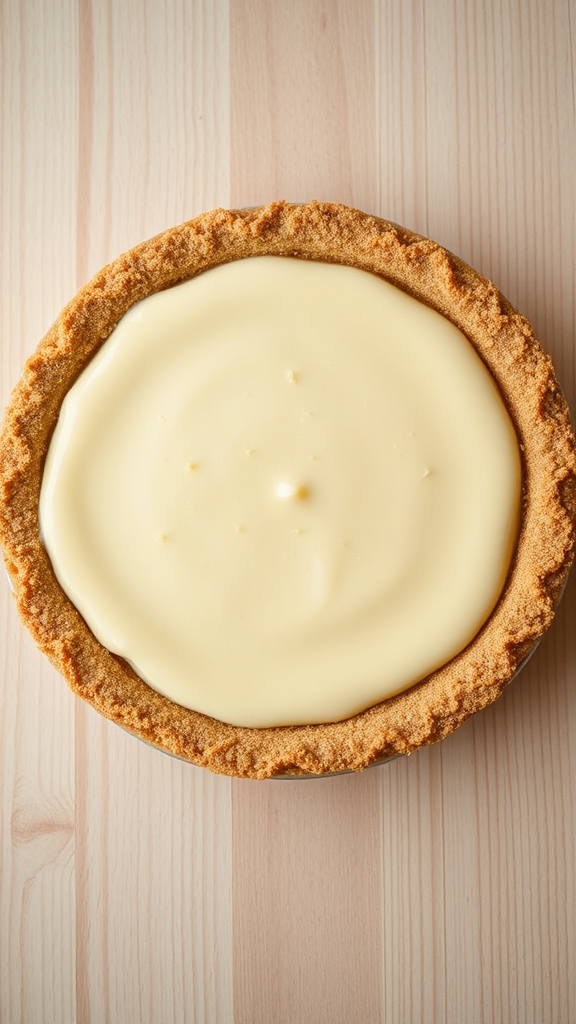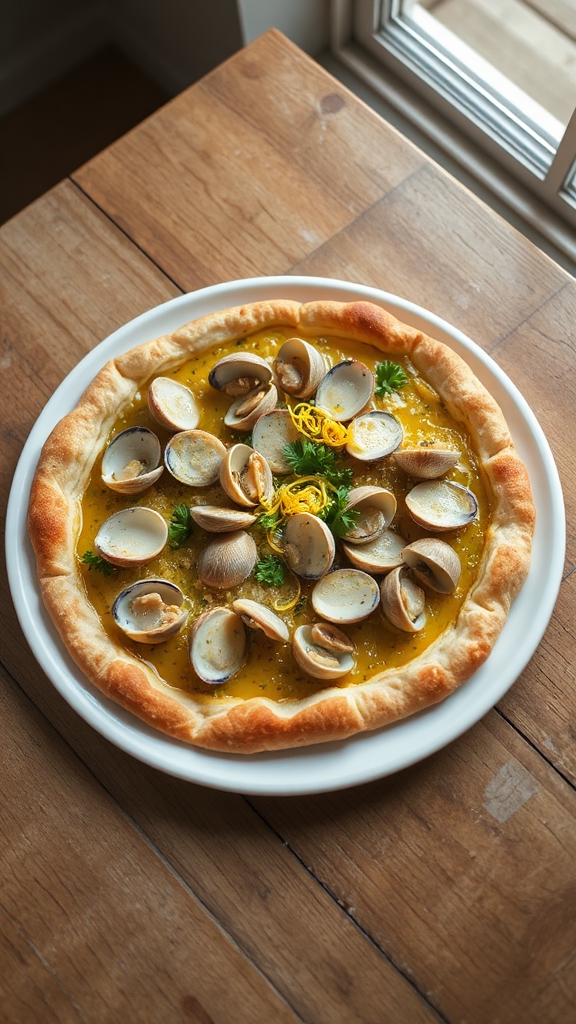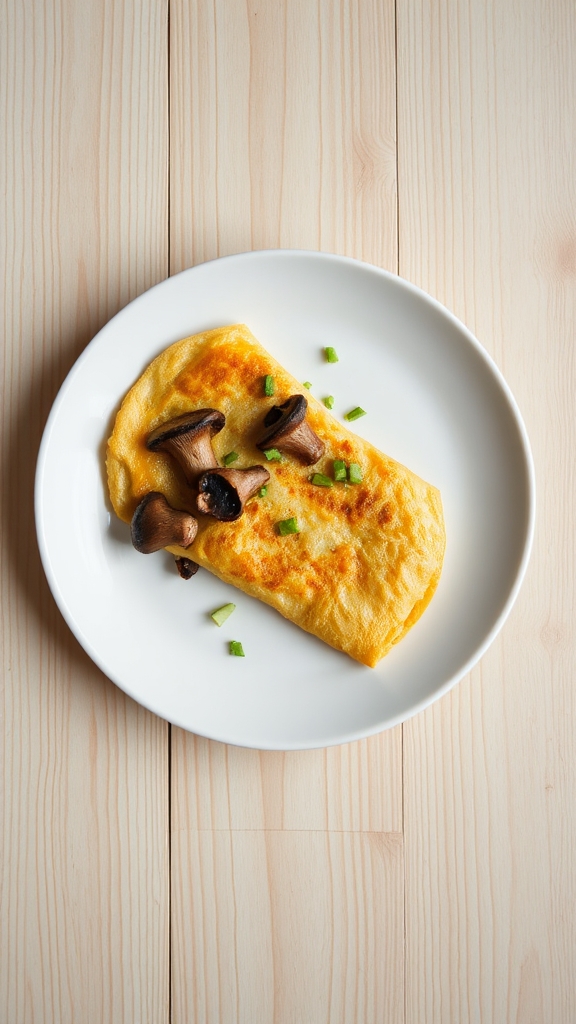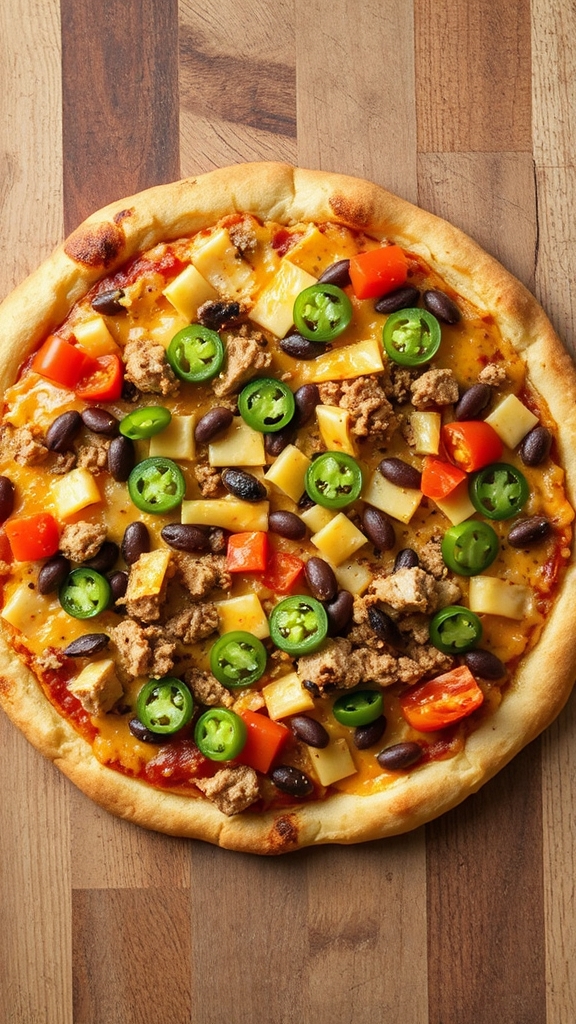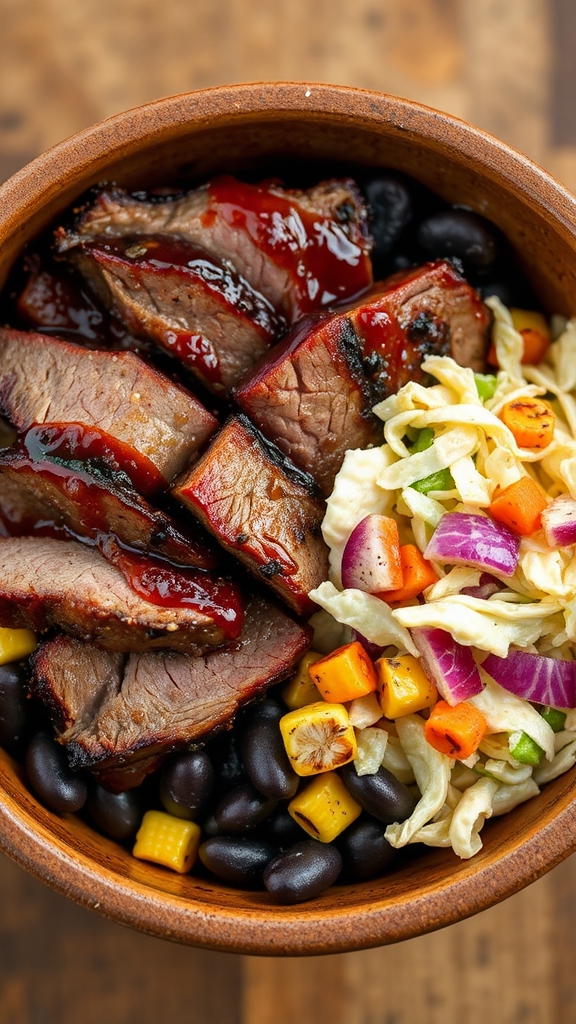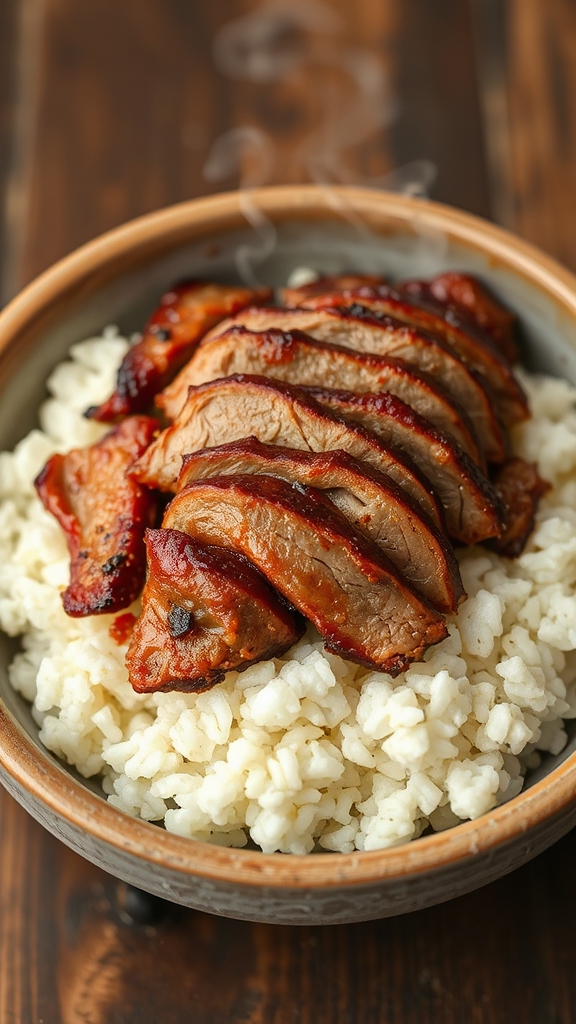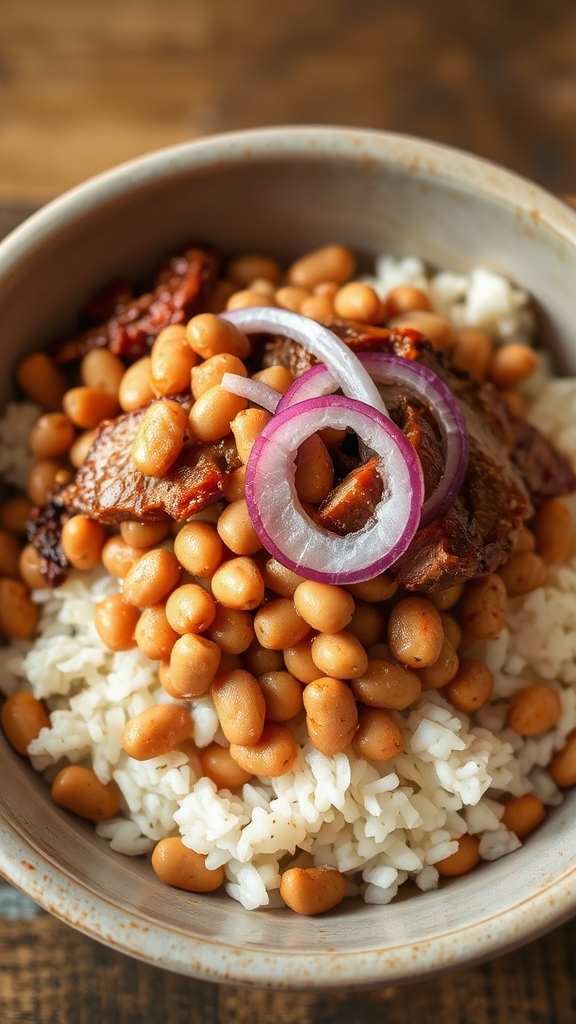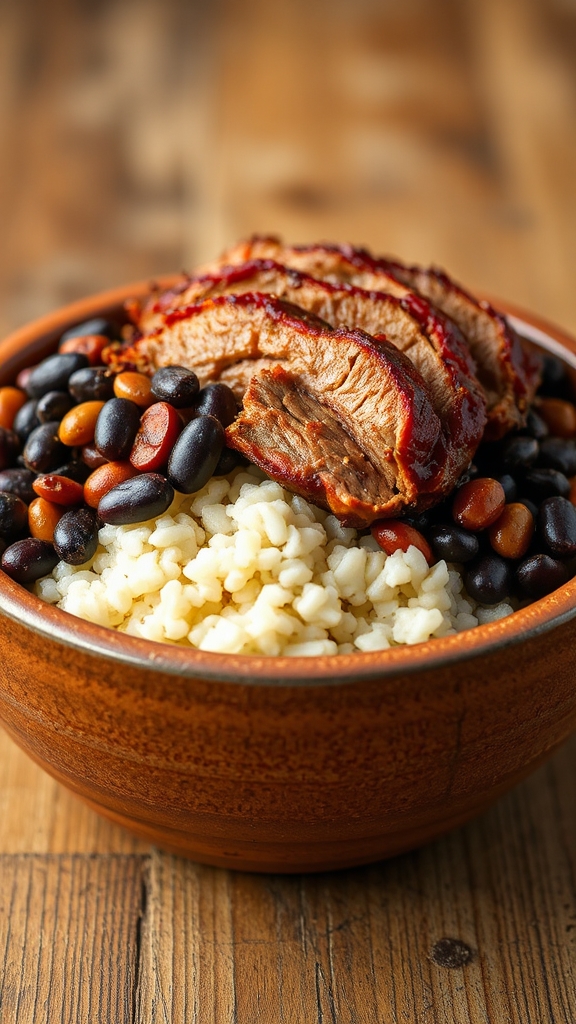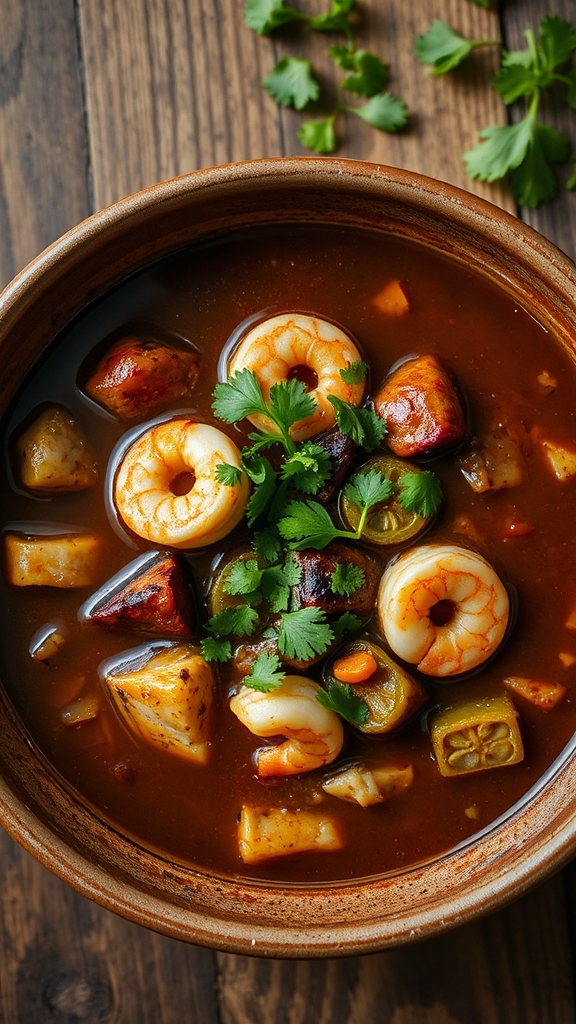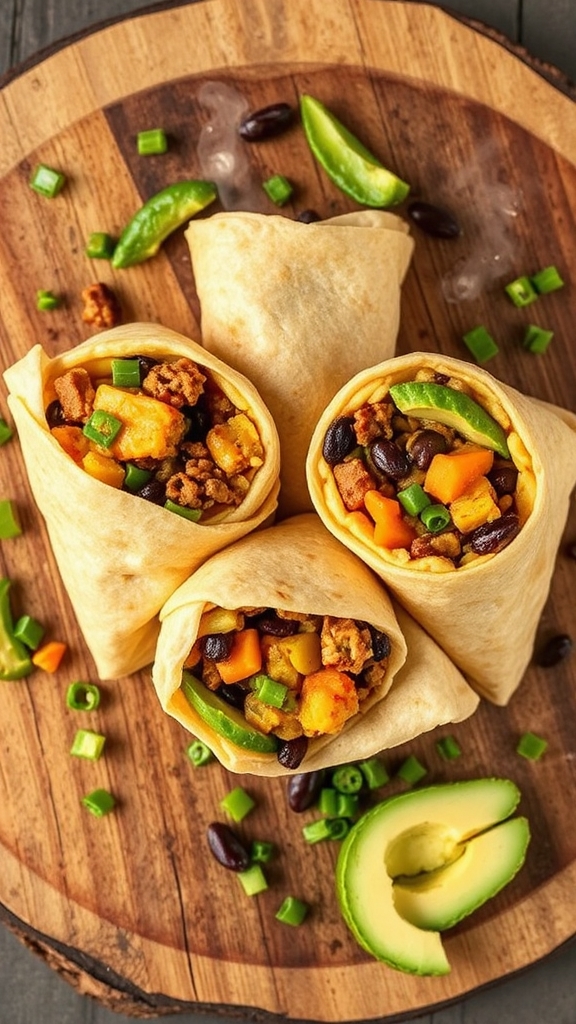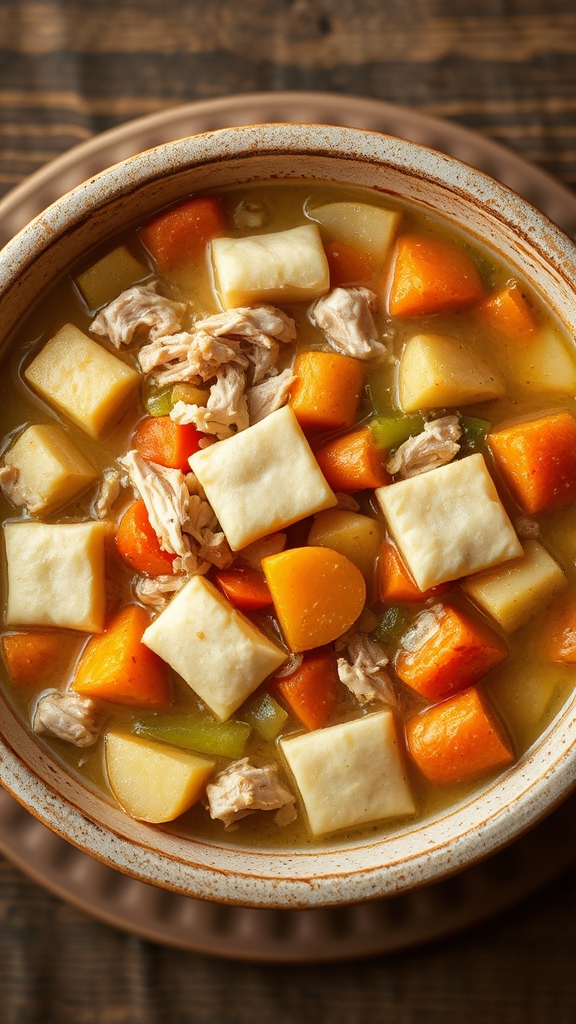Texas BBQ Brisket Meal Prep Bowls
Fire up your taste buds with Texas BBQ Brisket Meal Prep Bowls that blend smoky traditions and easy prep—discover the flavor hacks inside!
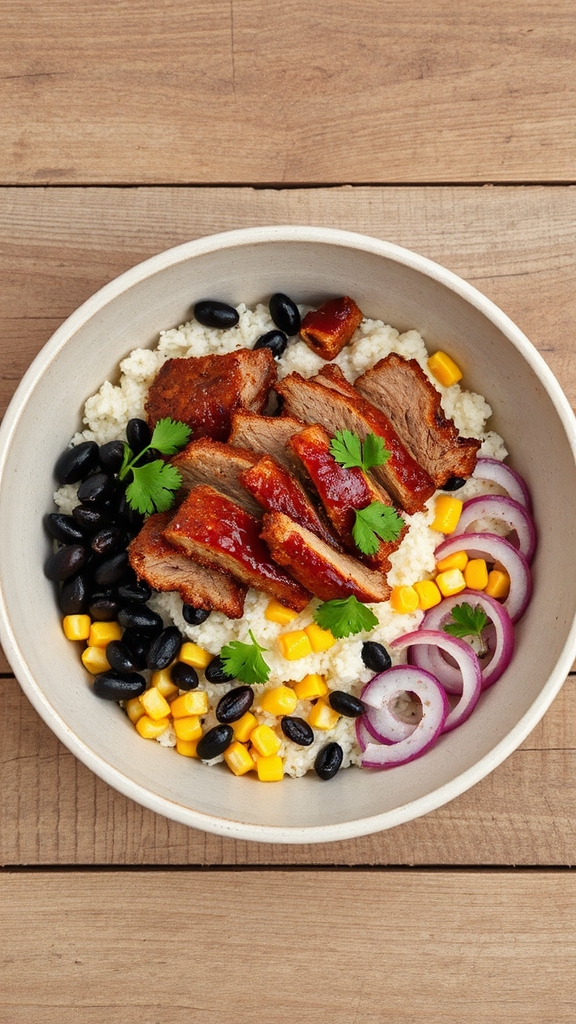
I’m turning Texas BBQ Brisket into simple meal prep bowls, drawing from those smoky 19th-century immigrant traditions. I rub a juicy 5-7 pound brisket with salt, pepper, and spices, then smoke it low and slow at 225°F until it’s tender. Once rested, I layer it over rice and beans, adding toppings like onions and sauce for grab-and-go feasts. If you’re craving more flavor hacks, the full breakdown awaits.
History
Texas BBQ Brisket Bowls trace their origins to the rich barbecue traditions of Texas, influenced by German and Czech immigrants who introduced slow-smoking techniques in the 19th century, blending with cowboy culture and Southern flavors to create a staple of American Texan cuisine.
Regional variations, such as the sauce-heavy East Texas style versus the dry-rubbed Central Texas version, highlight local pride and adaptations to ingredients, underscoring the dish’s role in fostering community identity.
Traditionally, it’s served at family gatherings, state fairs, holidays like the 4th of July, and casual barbecues, symbolizing hospitality and celebration in Texan social life.
Ingredients
- That star of the show, a good ol’ beef brisket – Aim for a 5- to 7-pound cut, flat or point style, with plenty of marbling to keep things juicy; you know, the kind that makes you pause and think, what if every meal could be this tender without all the fuss?
- A simple yet sneaky dry rub mix – Start with 2 tablespoons of coarse kosher salt, because life’s too short for bland flavors, and mix in 2 tablespoons of fresh cracked black pepper for that classic Texas kick; oh, and don’t forget 1 tablespoon each of garlic powder and onion powder, plus a teaspoon of smoked paprika, which adds a smoky whisper that might just have you wondering, how did something so basic turn into pure magic?
- Brown sugar for a touch of sweet intrigue – About 1 tablespoon stirred into the rub, because who says barbecue has to be all spicy; it’s like that friend who lightens up the party, balancing out the heat with a playful nudge that keeps everything from getting too serious.
- Cayenne pepper, if you’re feeling bold – Just a half teaspoon for some optional zing, the kind that teases your taste buds without overwhelming them; I mean, why not add a little adventure, especially on days when the kitchen feels a bit routine and you’re up for a harmless surprise?
- Liquid for that basting magic – A cup of apple cider vinegar or beef broth to mop on during smoking, because sometimes you need a trusty sidekick to lock in moisture; it’s the unsung hero that makes you go, wait, is this what keeps brisket from turning into shoe leather?
- Wood chips for smoking, like hickory or mesquite – Grab a couple of handfuls, the ones that give off that irresistible smoky aroma; imagine this as your barbecue’s secret handshake, drawing folks in with a scent that playfully exaggerates, hey, is that heaven in my backyard?
- For the bowl base, some fluffy white rice – About 2 cups uncooked, fluffed up and ready to absorb all those flavors; it’s like the dependable base that holds everything together, making you think, what would a bowl be without this trusty foundation to catch the good stuff?
- A heap of pinto beans – Canned or soaked and cooked, say 2 cups worth, with a dash of cumin for extra warmth; these little guys add heartiness and a nod to tradition, almost like they’re whispering, remember how beans make everything feel like a cozy gathering?
- Fresh toppings to liven things up – A couple of sliced red onions and some crunchy coleslaw mix, about 1 cup each, because who wants a bowl without that fresh crunch; it’s the playful contrast that might make you chuckle, thinking, okay, these veggies are crashing the meat party but in the best way possible.
- A drizzle of barbecue sauce – Homemade or store-bought, around 1/2 cup of that tangy East Texas style; it’s the finisher that ties it all together, leaving you to ponder, how does something so simple turn a meal into a story waiting to be shared?
- Pickles or jalapeños for a tangy twist – A handful of sliced dill pickles and maybe some fresh jalapeños if you’re in the mood; these add that zesty pop, like uninvited guests who show up and steal the show, making the whole bowl feel a tad more alive without trying too hard.
There you go, folks – pull these together, and you’re set for a bowl that’s got heart, a bit of humor in its layers, and that down-home vibe Texas is known for; it’s all about mixing the essentials with a chatty flair, like we’re just kicking back and planning a cookout.
Cooking Steps
Let’s jump into the fun part of making those Texas BBQ Brisket Bowls, where a little patience turns simple ingredients into something that feels like a backyard celebration.
First, grab that 5- to 7-pound beef brisket and mix up your dry rub with 2 tablespoons of coarse kosher salt, 2 tablespoons of fresh cracked black pepper, 1 tablespoon each of garlic powder and onion powder, 1 teaspoon of smoked paprika, 1 tablespoon of brown sugar, and maybe a half teaspoon of cayenne pepper if you’re in the mood for a subtle kick.
Rub this flavorful mix all over the brisket, coating every inch like you’re giving it a cozy blanket, then let it sit in the fridge for at least an hour—or overnight if you want to build that anticipation and wonder, what if this makes it even more tender?
Now, fire up your smoker or grill to around 225°F, using a couple of handfuls of hickory or mesquite wood chips for that smoky essence that draws everyone in.
Place the brisket on the grate, fat side up, and let it smoke for about 1 to 1.5 hours per pound, which means you’re looking at 5 to 10 hours total—time to relax and ponder, is there anything quite like the smell of barbecue wafting through the air?
Every hour or so, baste it with a cup of apple cider vinegar or beef broth to keep things moist, flipping it once halfway through so it cooks evenly and doesn’t dry out like forgotten leather in the sun.
Once the brisket reaches an internal temperature of 195°F to 205°F, pull it off and let it rest for 30 to 45 minutes under foil, allowing those juices to settle in and make you think, how does something so straightforward end up so rewarding?
While that’s happening, cook up 2 cups of uncooked white rice according to the package, and warm those 2 cups of pinto beans with a dash of cumin for extra flavor.
Finally, slice the brisket against the grain, then build your bowls with a base of fluffy rice, a heap of beans, the brisket, and top with sliced red onions and crunchy coleslaw for that fresh contrast—voila, a meal that pulls everything together like an old friend at a gathering.
Tips and Variations
If you’re tweaking your Texas BBQ Brisket Bowls, start by experimenting with the dry rub—swap in chili powder for smoked paprika if you want that extra Southwestern zing, or cut back on the cayenne to keep things mild for the kids, wondering all the while, does a little change really make it feel brand new?
For a quicker twist, especially on busy days, skip the smoker and use a slow cooker at low heat for 8 to 10 hours with a splash of liquid smoke, though you might miss that authentic outdoor vibe and end up with brisket that’s still tender but, let’s face it, not quite as brag-worthy.
Oh, and if beef’s not your thing, try pulled pork or even jackfruit for a vegetarian spin, piling it high on the rice and beans just the same, because who says tradition can’t bend a little for fun?
As for leftovers, store the sliced brisket in an airtight container with a bit of broth to stay juicy, saving you from that sad, dry reheating fiasco that no one wants to deal with the next day.
Tools
| Tool | Description |
|---|---|
| Smoker or Grill | For smoking or grilling the brisket to achieve authentic BBQ flavor. |
| Slow Cooker | Alternative for slow-cooking the brisket on low heat if a smoker isn’t available. |
| Sharp Knife | For trimming the brisket and slicing it after cooking. |
| Cutting Board | A sturdy surface for preparing and cutting the meat. |
| Mixing Bowl | For combining ingredients like the dry rub. |
| Measuring Cups and Spoons | For accurately measuring spices, liquids, and other ingredients. |
| Tongs | For handling and turning the brisket during cooking. |
| Meat Thermometer | To check the internal temperature of the brisket for doneness. |
| Aluminum Foil | For wrapping the brisket during cooking to retain moisture. |
| Serving Bowls | For assembling and serving the brisket bowls with rice and beans. |

Hi There! I'm Stephanie Miller: Elementary teacher from Columbus, OH sharing grandma's treasured American recipes! 50 years young, yoga enthusiast & kitchen storyteller. Welcome to my food family! 🍰❤️

